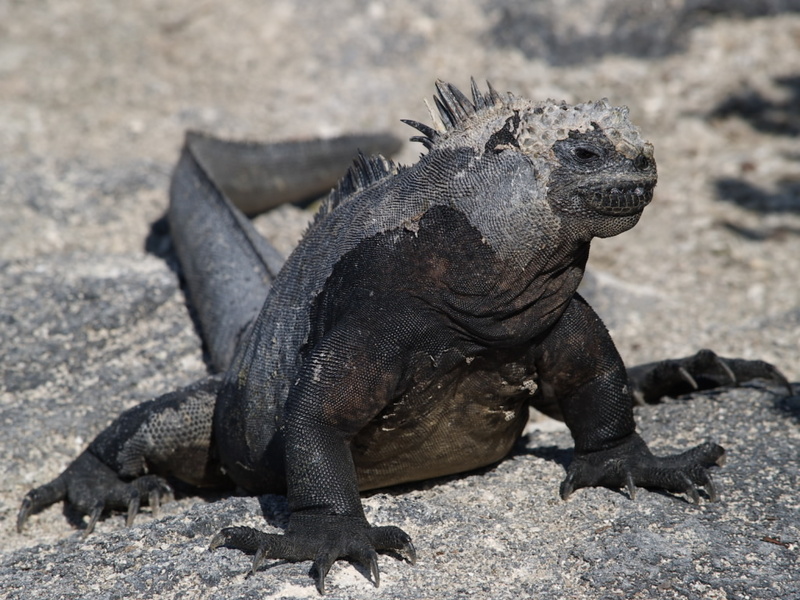| New Photos | Animal News | Animal Sounds | Animal Movies | Upload Photo | Copyright | Korean |
|---|
| Funny Animal Photos | Monsters in Animalia | Wiki Articles Fun Facts about Animals | Links | Home | Mobile A.P.A. |
|---|
| Image Info | Original File Name: Marine Iguana (Amblyrhynchus cristatus)03.jpg Resolution: 1024x768 File Size: 321504 Bytes Date: 2004:04:28 16:51:00 Camera: E-1 (OLYMPUS CORPORATION ) F number: f/2.8 Exposure: 1/800 sec Focal Length: 182/1 Upload Time: 2007:09:25 20:07:30 | |
| Author | Name (E-mail): Unknown | |
| Subject | Marine Iguana (Amblyrhynchus cristatus) - Wiki | |
 |
| Email : E-Card | Poster | Web Master Delete Edit Info Admin |
| Description | Marine Iguana (Amblyrhynchus cristatus) - Wiki
Marine Iguana
Another difference between the iguanas is size, which is different depending on the island the individual iguana inhabits. The iguanas living on the islands of Fernandina and Isabela (named for the famous rulers of Spain) are the largest found anywhere in the Gal??pagos. On the other end of the spectrum, the smallest iguanas are found on the island on Genovesa. Adult males are approximately 1.3 m long, females 0.6 m, males weigh up to 1.5 kg. Behaviour As a cold blooded animal, the marine iguana can spend only a limited time in the cold sea, where it dives for algae. However, by swimming only in the shallow waters around the island they are able to survive single dives of up to half an hour at depths of more than 15 m. After these dives, they return to their territory to bask in the sun and warm up again. When cold, the iguana is unable to move effectively, making them vulnerable to predation, so they become highly aggressive before heating up (since they are unable to run away they try to bite attackers in this state). During the breeding season, males become highly territorial. The males assemble large groups of females to mate with, and guard them against other male iguanas. However, at other times the species is only aggressive when cold. Marine iguanas have also been found to change their size to adapt to varying food conditions. During El Ni??o conditions when the algae that the iguanas feed on was decreased for a period of two years, some were found to decrease their length by as much as 20%. When food conditions returned to normal, the iguanas returned to their pre-famine size. It is speculated that the bones of the iguanas actually shorten as a shrinkage of connective tissue could only account for a 10% length change. Conservation This species is completely protected under the laws of Ecuador, and is listed under CITES Appendix II. El Ni??o effects cause periodic declines in population, with high mortality, and the marine iguana is threatened by predation by exotic species. The total population size is unknown, but is, according to IUCN, at least 50,000, and estimates from the Charles Darwin Research Station are in the hundreds of thousands. Threats The marine iguanas have not evolved to combat newer predators. Therefore, cats and dogs eat both the young iguanas and dogs will kill adults due to the iguanas' slow reflex times and tameness. Dogs are especially common around human towns and can cause tremendous predation. Cats are also common in towns, but also occur in numbers in remote areas, where they take a toll on iguanas. Evolution Researchers theorize that land and marine iguanas evolved from a common ancestor since arriving on the islands from South America, presumably by driftwood. It is thought that the ancestral species inhabited a part of the volcanic archipelago that is now submerged. A second school of thought holds that the Marine iguana may have evolved from a now extinct family of sea-going reptiles. http://en.wikipedia.org/wiki/Marine_Iguana
| ||
| Copyright Info | AnimmalPicturesArchive.com does not have the copyright for this image. This photograph or artwork is copyright by the photographer or the original artist. If you are to use this photograph, please contact the copyright owner or the poster. |
|
|
|
| |||||||
| CopyLeft © since 1995, Animal Pictures Archive. All rights may be reserved. | ||||||||
Stats